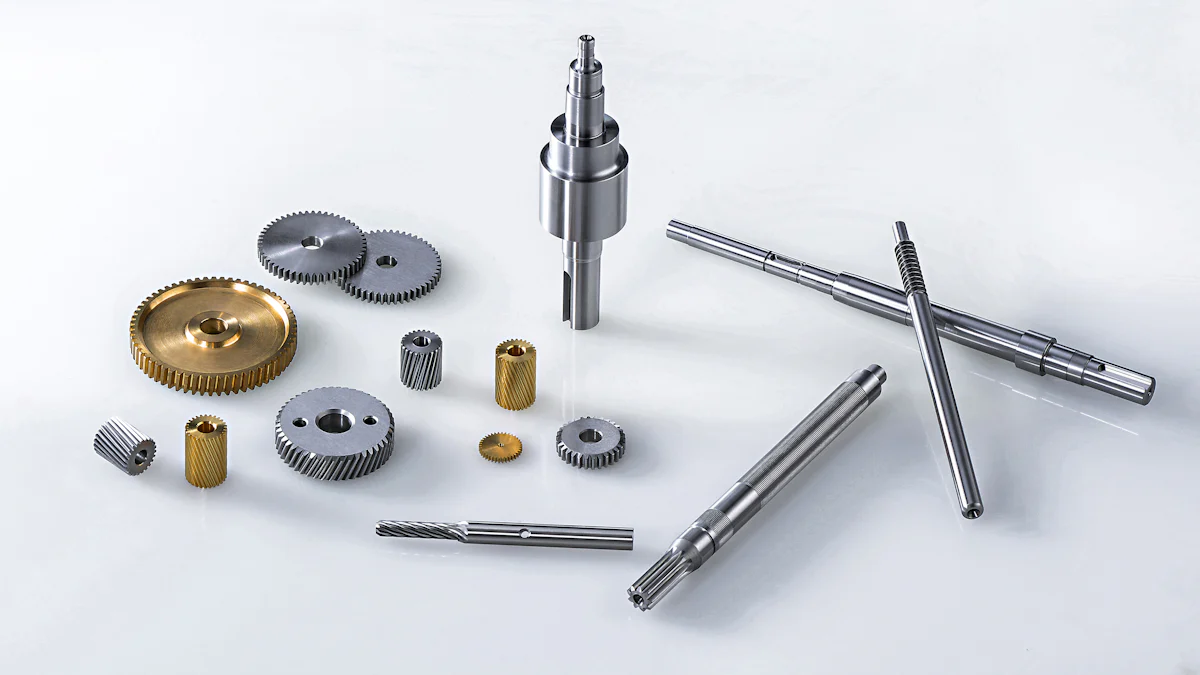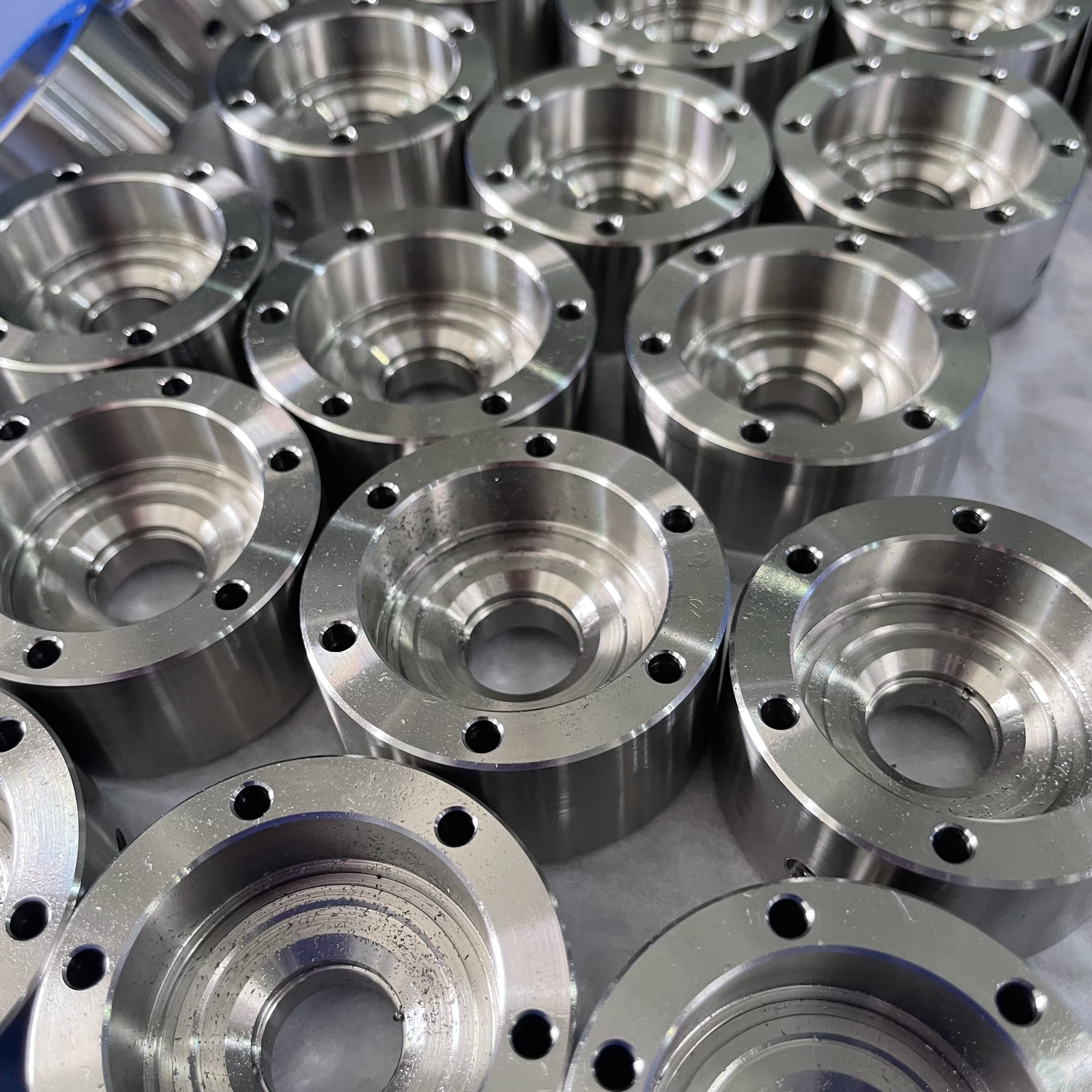Ultra-High-Speed Internal Grinding vs. Traditional Machining: A Comparative Analysis

The Evolution of Machining: From Traditional to Ultra-High-Speed
The history of machining dates back to ancient times, where early methods and tools were used to shape materials into functional components. Innovation has always been at the heart of machining, driving the development of new techniques and technologies to meet the evolving needs of various industries.
The Dawn of Machining
Early methods and tools used for machining were rudimentary yet groundbreaking for their time. Craftsmen relied on manual processes, such as hand chiseling and filing, to create intricate designs and precise shapes. These early artisans laid the foundation for modern machining practices through their dedication to craftsmanship and continuous improvement.
The Role of Innovation in Machining cannot be overstated. Throughout history, advancements in materials, tooling, and techniques have revolutionized the way components are manufactured. From the discovery of metalworking to the invention of power-driven machine tools, each milestone has propelled the industry forward, paving the way for more sophisticated methods.
The Leap to Ultra-High-Speed
The introduction of ultra-high-speed internal grinders marked a significant turning point in machining technology. These advanced machines are designed to operate at exceptionally high speeds, enabling manufacturers to achieve unparalleled levels of precision and efficiency in their production processes. The utilization of cutting-edge technology has transformed traditional grinding methods into a realm of unprecedented speed and accuracy.
Impact on Manufacturing Efficiency: The adoption of ultra-high-speed internal grinders has revolutionized manufacturing efficiency by reducing cycle times and enhancing overall productivity. Manufacturers can now produce complex components with unmatched precision, meeting the stringent demands of modern industries while maintaining high throughput.
Exploring the Ultra-High-Speed Internal Grinder
The ultra-high-speed internal grinder represents a pinnacle of precision engineering and technological innovation, offering a host of features that set it apart from traditional machining methods.
Key Features of Ultra-High-Speed Internal Grinders
Precision and Performance
The ultra-high-speed internal grinder is engineered to deliver unparalleled levels of precision, ensuring that even the most intricate components are manufactured with utmost accuracy. With advanced control systems and high-frequency spindles, these grinders can achieve rotational speeds of up to 42,000 rpm, enabling micron-level accuracy in the grinding process. This level of precision is essential for industries where quality and consistency are paramount.
Technological Advancements
These cutting-edge machines incorporate state-of-the-art technological advancements that elevate the standards of internal grinding. High-frequency spindles, simultaneous multi-axis control, and advanced software integration enable seamless operation and precise material removal. The incorporation of innovative cooling systems ensures thermal stability during high-speed operations, safeguarding against heat-induced distortions and maintaining dimensional integrity.
Benefits of Using Ultra-High-Speed Internal Grinders
Enhanced Accuracy and Productivity
The utilization of ultra-high-speed internal grinders translates to a significant enhancement in both accuracy and productivity. The ability to achieve exceptional surface finishes with minimal tolerances ensures that components meet stringent quality standards. Moreover, the high-speed capabilities reduce cycle times, leading to increased throughput without compromising on precision. This combination of accuracy and productivity positions these grinders as indispensable assets in modern manufacturing environments.
Cost-Effectiveness in the Long Run
While the initial investment in an ultra-high-speed internal grinder may seem substantial, its long-term cost-effectiveness cannot be overlooked. The efficiency gains achieved through reduced cycle times directly impact production costs by optimizing resource utilization. Additionally, the superior surface finishes achieved through high-speed grinding minimize the need for secondary finishing processes, further streamlining production workflows and reducing overall operational expenses.
Traditional Machining Techniques: A Retrospective
Overview of Traditional Machining
Common Methods and Their Applications
Traditional machining encompasses a range of time-honored methods that have been instrumental in shaping various industries. Turning, milling, and drilling are among the most prevalent techniques, each serving distinct purposes in component manufacturing. Turning is commonly employed to create cylindrical components such as shafts and bushings, while milling is utilized for producing complex shapes and features on workpieces. On the other hand, drilling is essential for creating holes of varying sizes and depths in materials.
These methods have found widespread applications across diverse sectors, including automotive, aerospace, and medical device manufacturing. In the automotive industry, turning processes are integral to producing engine components, while milling techniques are crucial for fabricating intricate parts such as gears and transmission components. Similarly, drilling plays a pivotal role in aerospace manufacturing by enabling the creation of precise holes in aircraft components.
Limitations and Challenges
While traditional machining techniques have been foundational to industrial production, they are not without limitations. One significant challenge lies in achieving high levels of precision and surface finish consistency across large production volumes. The inherently slower speeds of traditional machining processes can lead to longer cycle times, impacting overall productivity. Moreover, the need for secondary finishing operations to attain desired tolerances adds complexity to workflows and increases lead times.
The Cost of Tradition
Financial Implications
The reliance on traditional machining methods carries notable financial implications for manufacturers. The extensive use of labor-intensive processes contributes to higher labor costs due to increased manual intervention required throughout production cycles. Additionally, the maintenance and upkeep of conventional machine tools entail ongoing expenses related to tooling replacements and equipment servicing.
Moreover, the need for skilled machinists proficient in operating traditional machines adds another layer of expenditure through training programs and workforce development initiatives. These cumulative financial burdens can pose challenges for businesses striving to optimize operational costs while maintaining competitive pricing strategies.
Impact on Production Speed and Quality
The impact of traditional machining techniques on production speed and quality cannot be overlooked. The relatively slower material removal rates associated with these methods result in longer lead times for component fabrication. This can impede manufacturers' ability to meet tight delivery schedules and respond swiftly to market demands.
Furthermore, achieving consistent quality standards across large production runs presents a formidable challenge due to variations inherent in manual operations. The potential for human error during traditional machining processes introduces an element of unpredictability that can compromise the overall quality of manufactured components.
Comparative Analysis: Ultra-High-Speed vs. Traditional
Efficiency and Speed
A Comparison of Production Times
When comparing the production times of ultra-high-speed internal grinders with traditional machining techniques, a clear distinction emerges in terms of efficiency and speed. The utilization of ultra-high-speed internal grinders enables manufacturers to achieve significantly reduced cycle times, leading to expedited component fabrication. In contrast, traditional machining methods often entail longer processing durations due to their inherent limitations in material removal rates and operational speeds.
The high rotational speeds and advanced control systems integrated into ultra-high-speed internal grinders facilitate rapid material removal, allowing for swift completion of intricate grinding tasks. This accelerated production pace translates to enhanced throughput and shorter lead times, enabling manufacturers to meet demanding delivery schedules without compromising on quality.
Meeting Modern Manufacturing Demands
In today's dynamic industrial landscape, modern manufacturing demands are characterized by the need for agile production processes that can swiftly adapt to changing market requirements. Ultra-high-speed internal grinders excel in meeting these demands by offering unparalleled efficiency and speed, thereby empowering manufacturers to stay competitive in fast-paced industries. The ability to deliver high-precision components within compressed timelines positions these advanced machines as indispensable assets for addressing the evolving needs of contemporary manufacturing.
Accuracy and Precision
The Importance in High-Quality Manufacturing
Accuracy and precision are paramount in high-quality manufacturing, where even minor deviations can have significant implications on component performance and functionality. Traditional machining methods often face challenges in consistently achieving the required levels of accuracy across large production volumes due to variations inherent in manual operations.
In contrast, ultra-high-speed internal grinders uphold stringent precision standards through their advanced technological capabilities, ensuring that each component is manufactured with micron-level accuracy. The integration of high-frequency spindles and cutting-edge control systems enables these machines to execute grinding operations with exceptional precision, meeting the exacting specifications demanded by modern industries.
How Ultra-High-Speed Internal Grinders Excel
The superiority of ultra-high-speed internal grinders in accuracy and precision lies in their ability to perform intricate grinding tasks at unprecedented speeds without compromising on quality. These advanced machines leverage high-frequency spindles that enable rotational speeds up to 42,000 rpm, resulting in precise material removal with minimal tolerances.
Furthermore, simultaneous multi-axis control ensures comprehensive command over the grinding process, allowing for intricate geometries and complex features to be executed with unmatched accuracy. This level of precision is essential for industries such as aerospace, automotive, and medical device manufacturing where uncompromising quality standards are non-negotiable.
Cost Implications
Initial Investment vs. Long-Term Savings
The cost implications associated with adopting ultra-high-speed internal grinders versus traditional machining methods warrant careful consideration from a strategic standpoint. While the initial investment required for acquiring advanced grinding technology may appear substantial compared to conventional machines, it is essential to evaluate the long-term savings derived from improved efficiency and productivity.
The streamlined production workflows facilitated by ultra-high-speed internal grinders result in reduced cycle times and enhanced throughput, optimizing resource utilization while minimizing operational costs. Additionally, the superior surface finishes achieved through high-speed grinding mitigate the need for extensive secondary finishing processes, further contributing to long-term cost savings.
The Economic Advantage of Ultra-High-Speed Grinding
From an economic perspective, embracing ultra-high-speed grinding technology offers a compelling advantage in terms of overall cost-effectiveness. The efficient utilization of resources coupled with minimized lead times results in optimized production costs while maintaining uncompromised quality standards. This economic advantage positions ultra-high-speed internal grinders as strategic investments that yield substantial returns over time through improved operational efficiencies.
Conclusion: The Future of Machining
Embracing Ultra-High-Speed Internal Grinding
The Path Forward for Manufacturers
As the manufacturing landscape continues to evolve, embracing ultra-high-speed internal grinding represents a pivotal step forward for manufacturers seeking to enhance their production capabilities. By integrating advanced grinding technology into their operations, manufacturers can unlock new levels of efficiency, precision, and cost-effectiveness. The path forward involves a strategic shift towards leveraging cutting-edge internal grinders that offer unparalleled speed and accuracy, positioning companies at the forefront of modern manufacturing practices.
Overcoming the Barriers to Adoption
While the benefits of ultra-high-speed internal grinding are undeniable, overcoming the barriers to adoption requires a comprehensive approach. Manufacturers must invest in training programs to equip their workforce with the necessary skills to operate and maintain advanced grinding equipment effectively. Additionally, fostering a culture of innovation and continuous improvement within organizations is essential for driving widespread acceptance of ultra-high-speed internal grinding as the standard for high-precision component manufacturing.
Final Thoughts
The Role of Innovation in Shaping the Future
Innovation serves as the cornerstone of progress in machining, shaping the future by introducing transformative technologies that redefine industry standards. The relentless pursuit of innovation drives the development of ultra-high-speed internal grinders, empowering manufacturers to achieve unprecedented levels of productivity and quality. Embracing innovation is not merely an option but a necessity for staying competitive in today's rapidly evolving manufacturing landscape.
A Call to Action for Industry Leaders
Industry leaders are called upon to embrace a forward-looking mindset that prioritizes technological advancement and operational excellence. By championing the adoption of ultra-high-speed internal grinding and investing in state-of-the-art equipment, leaders can spearhead a paradigm shift towards more efficient and sustainable manufacturing practices. This call to action underscores the imperative for industry-wide collaboration in driving innovation and propelling machining into a future defined by precision, speed, and economic viability.
In summary, embracing ultra-high-speed internal grinding represents a transformative journey towards redefining manufacturing norms while setting new benchmarks for efficiency, precision, and long-term sustainability.
See Also
Investigating How Machining Technology Affects Part Processing Precision
Resolving the Machining Challenge: NC Milling and CNC Engraving for Best Outcomes
Setting Apart Precision Machining from Standard CNC: An In-Depth Manual
Optimizing Quality of Processing with CNC Precision Machining Technology
Revealing the Precision of CNC Machining in Aerospace Sector
About US
Follow Us
Your prototype holds unparalleled significance, and we deeply value its uniqueness. Collaborating with you during the preparation phase for running your prototype or parts is a commitment we gladly embrace. Whether it's a single part or a complex assembly, we are dedicated to selecting the optimal tools and pathways to bring your envisioned product to life.
At Precision Fab CNC Machining, we specialize in producing parts for prototypes, short runs, and high-volume production. Our prototyping machine capabilities extend across metal, plastic, and wood machining, with welding fabrication services available to complement and finalize your prototype if required.
Address
Address: Room320 10F, Building A,Nanshan international building, Dayawan District, Huizhou, Guangdong, 516001 China
Contacts
billy@timaycnc.com

